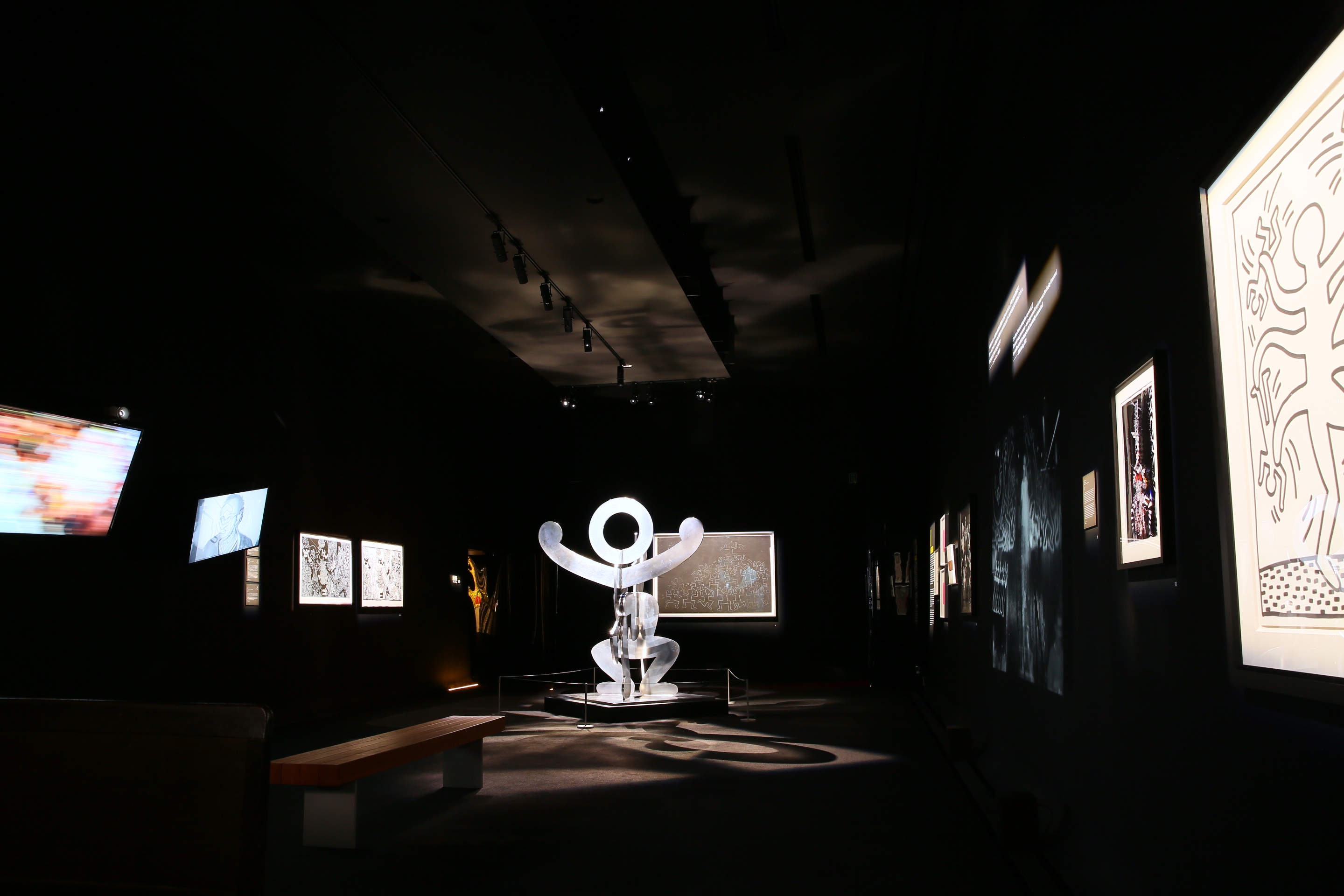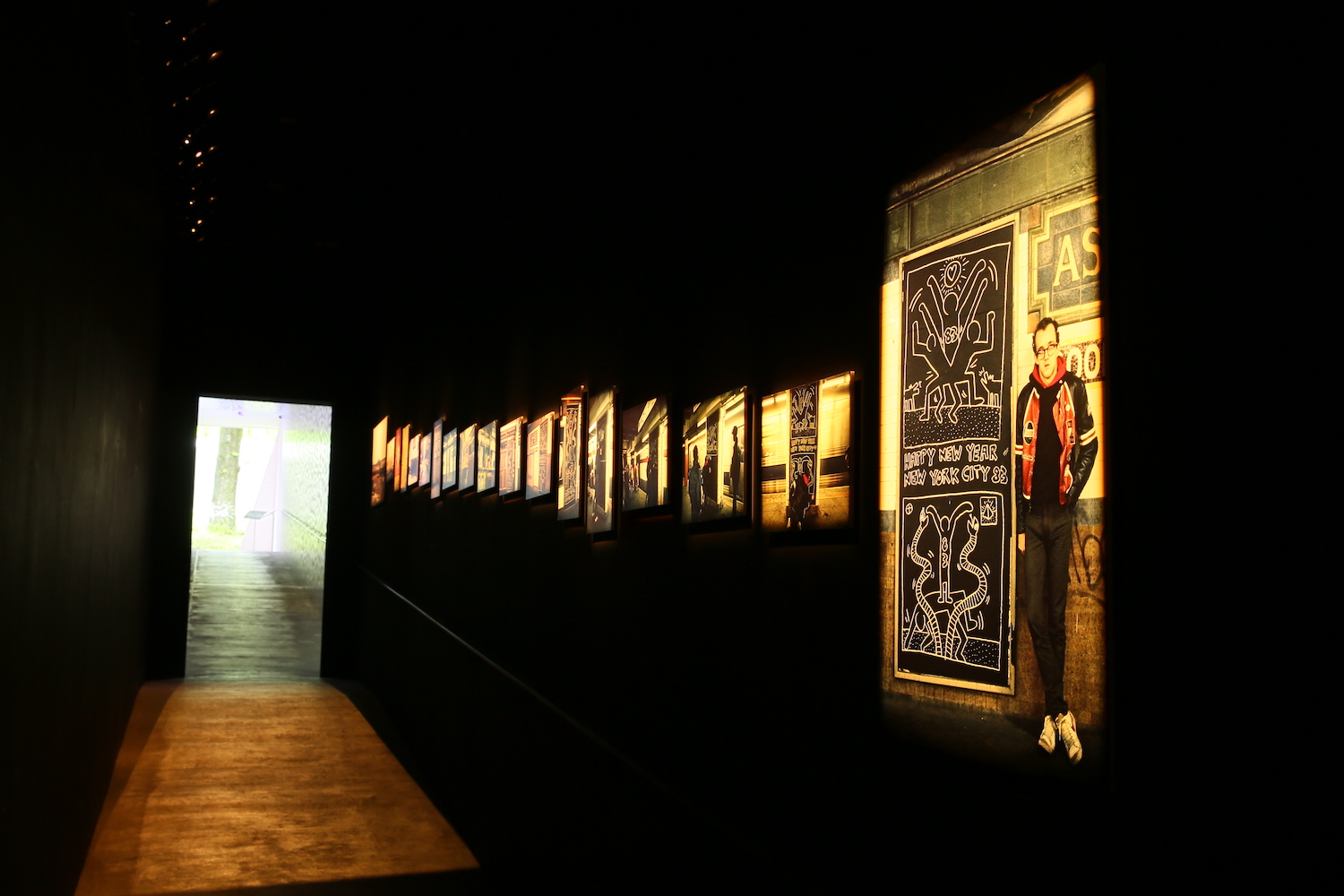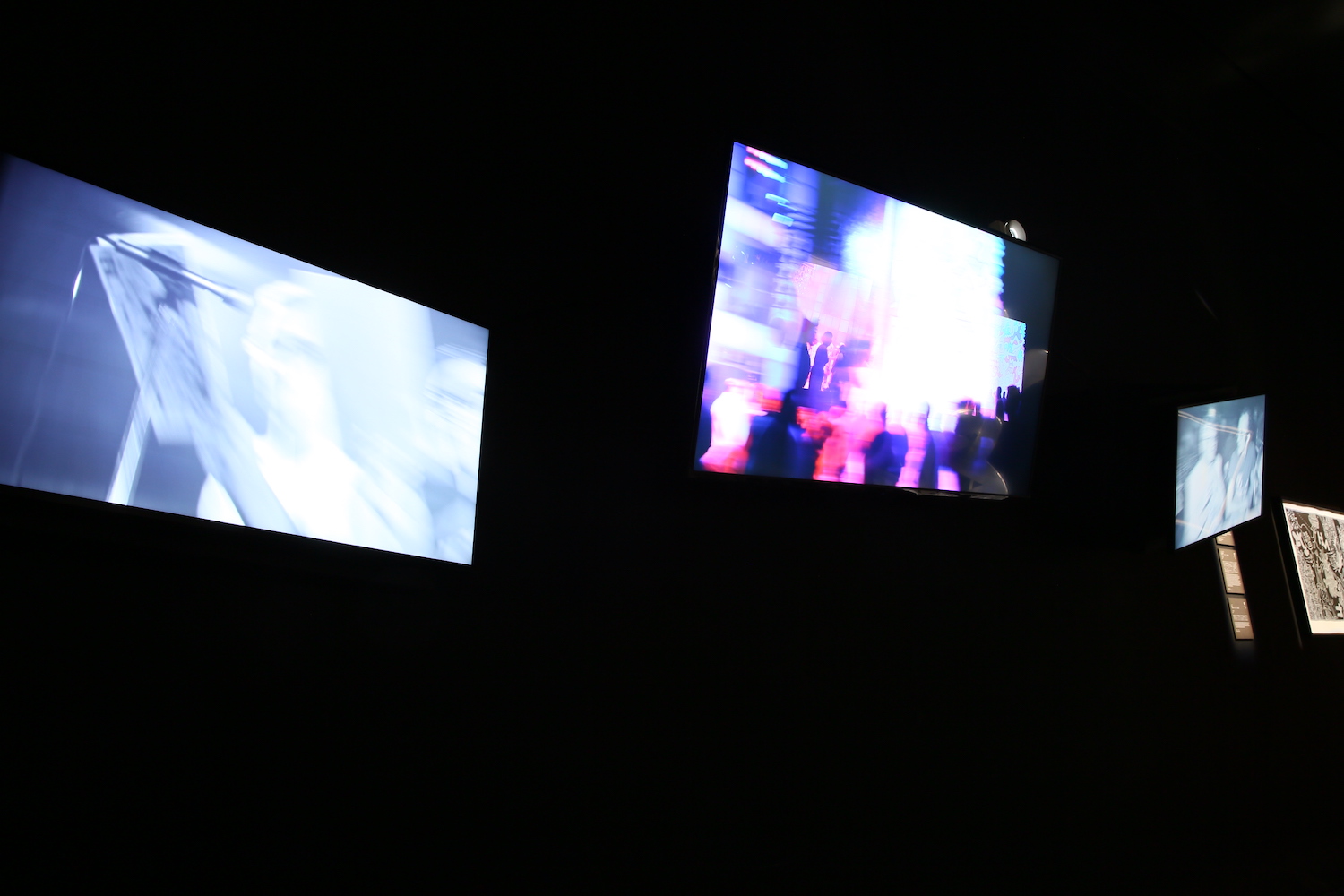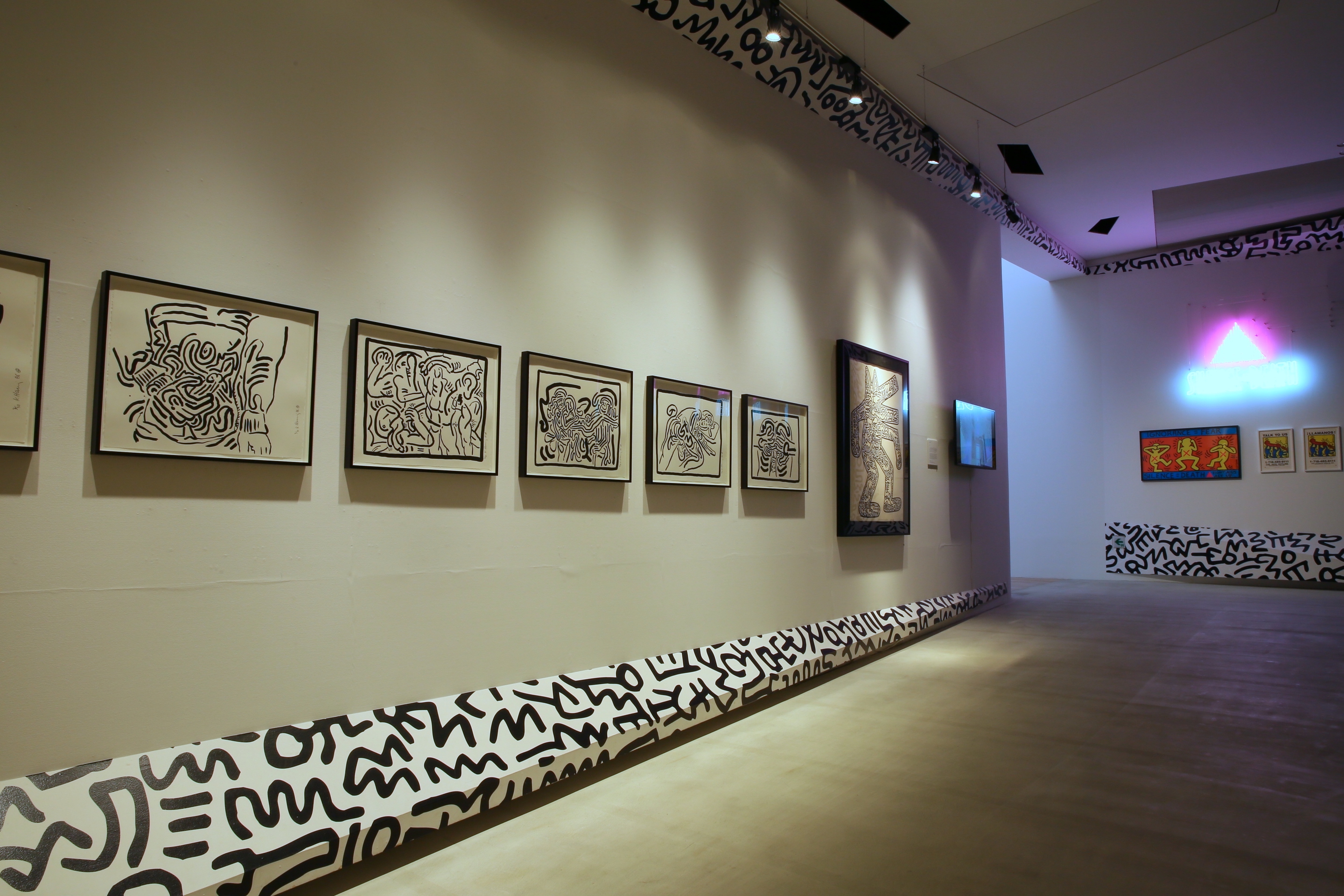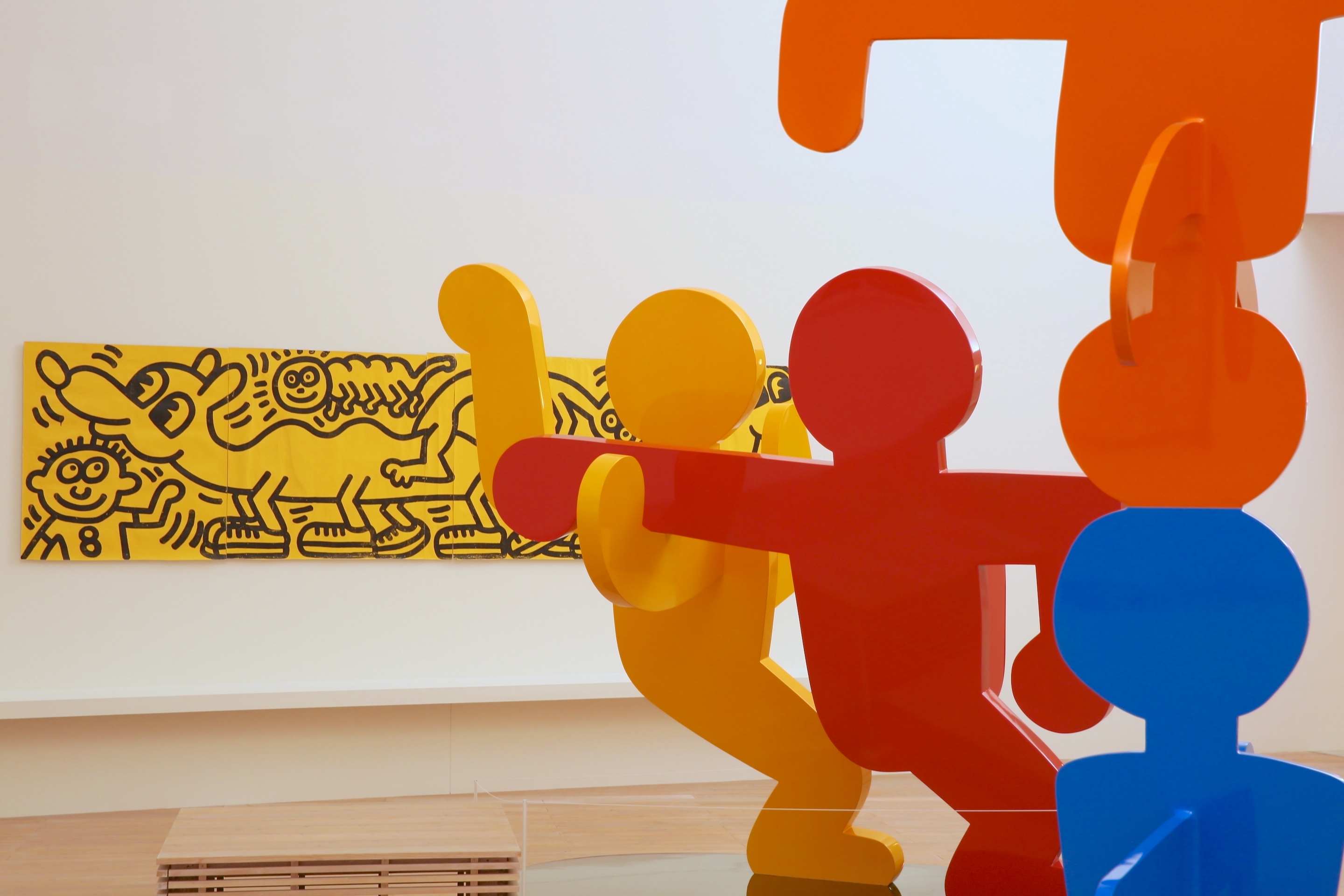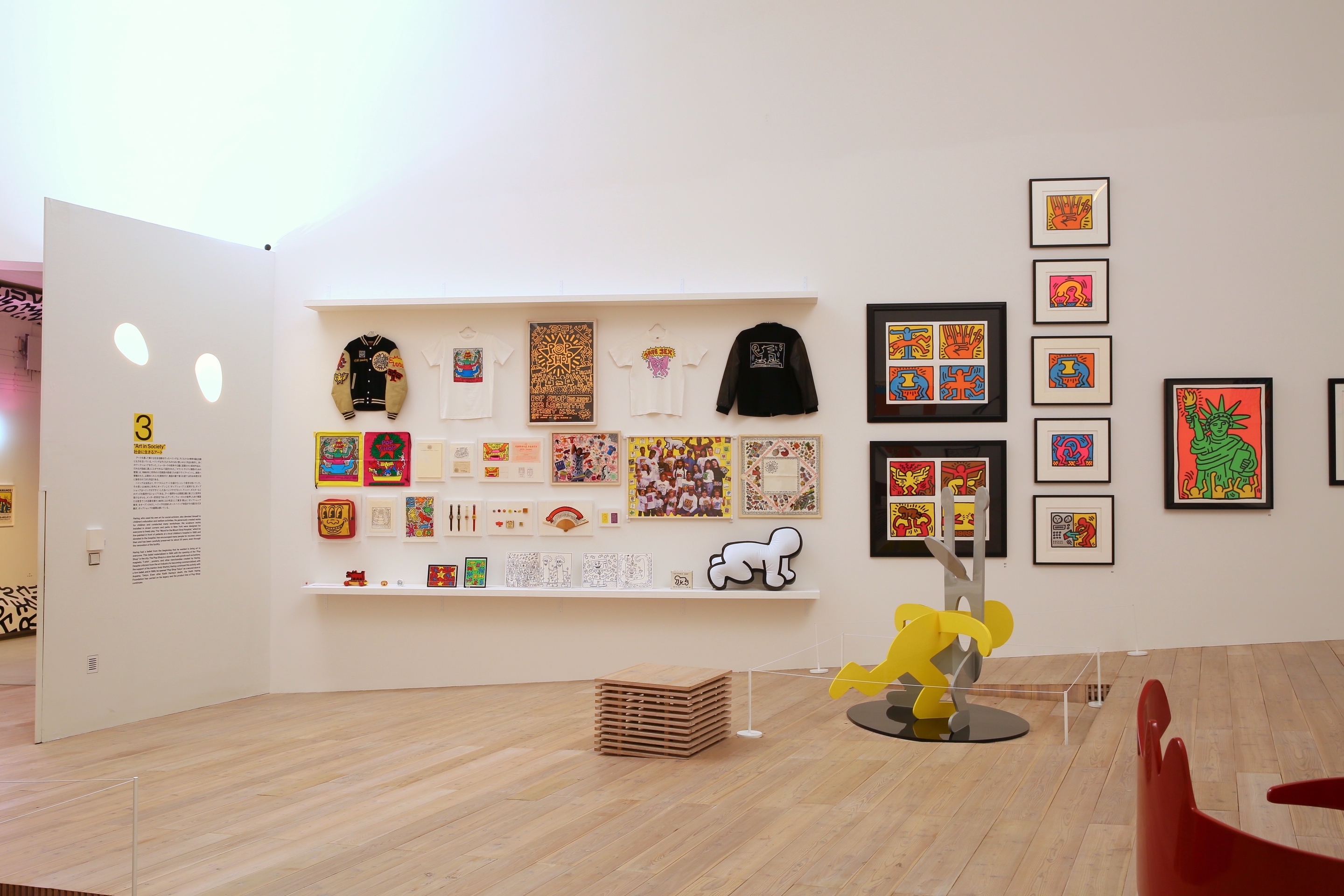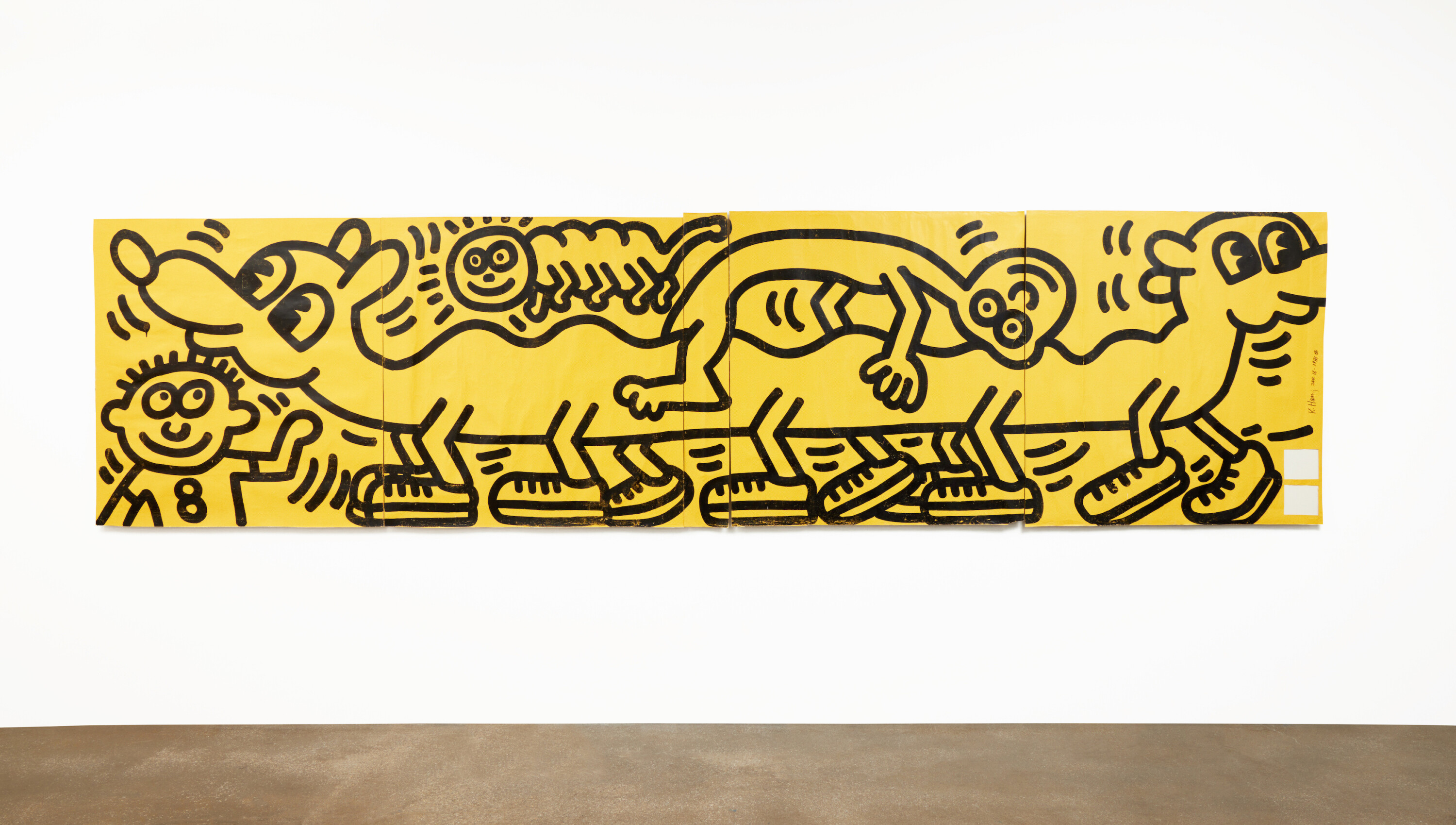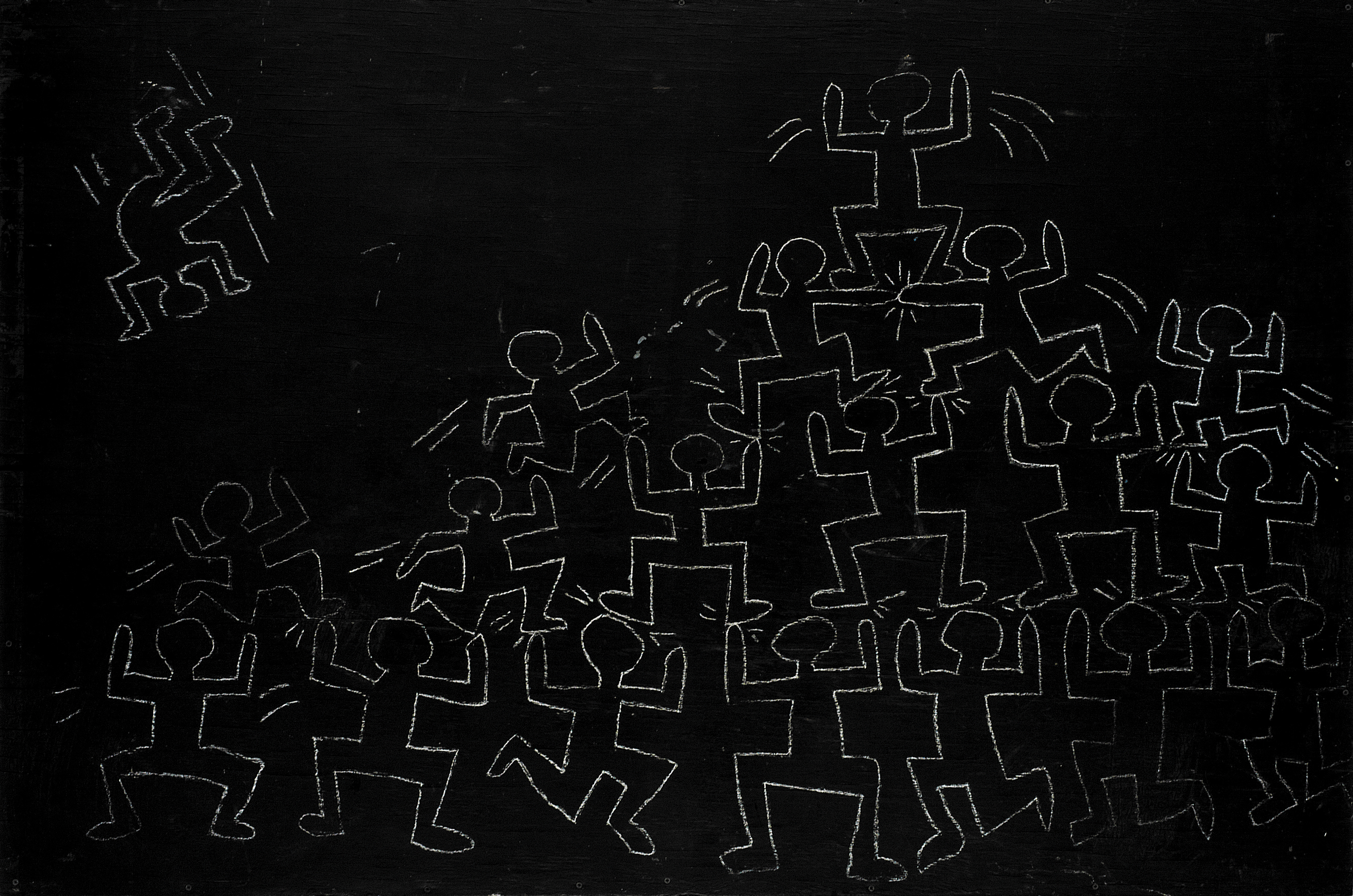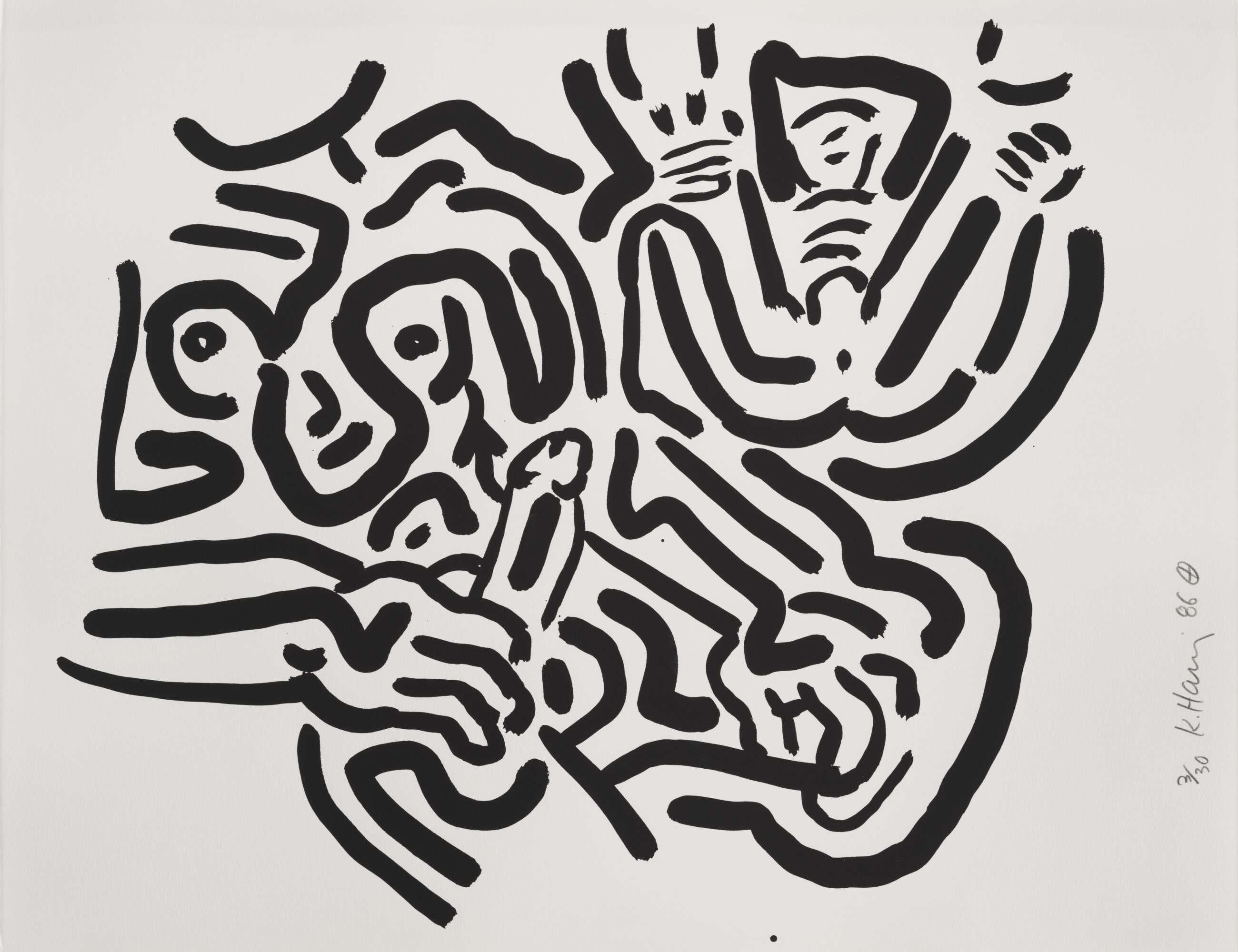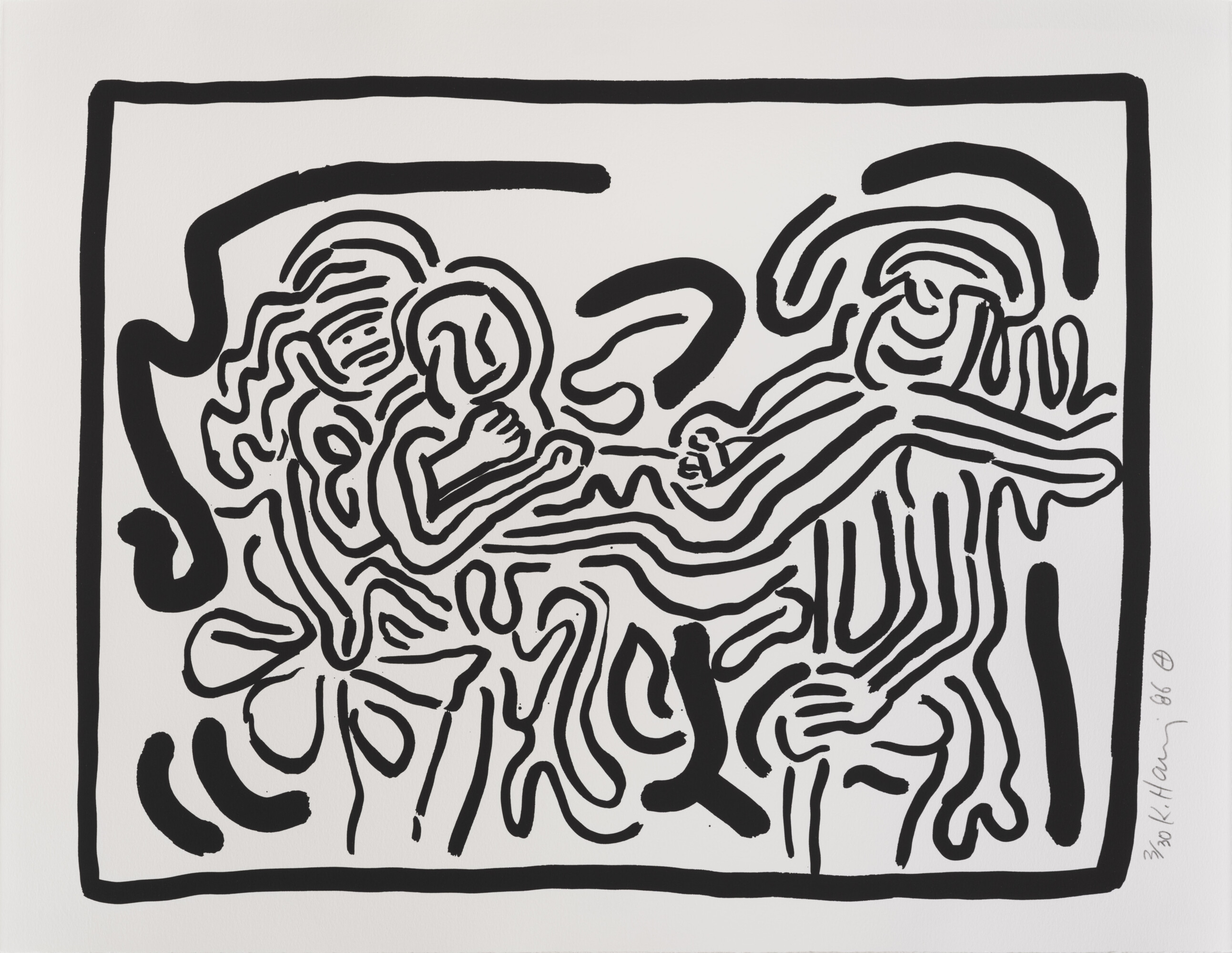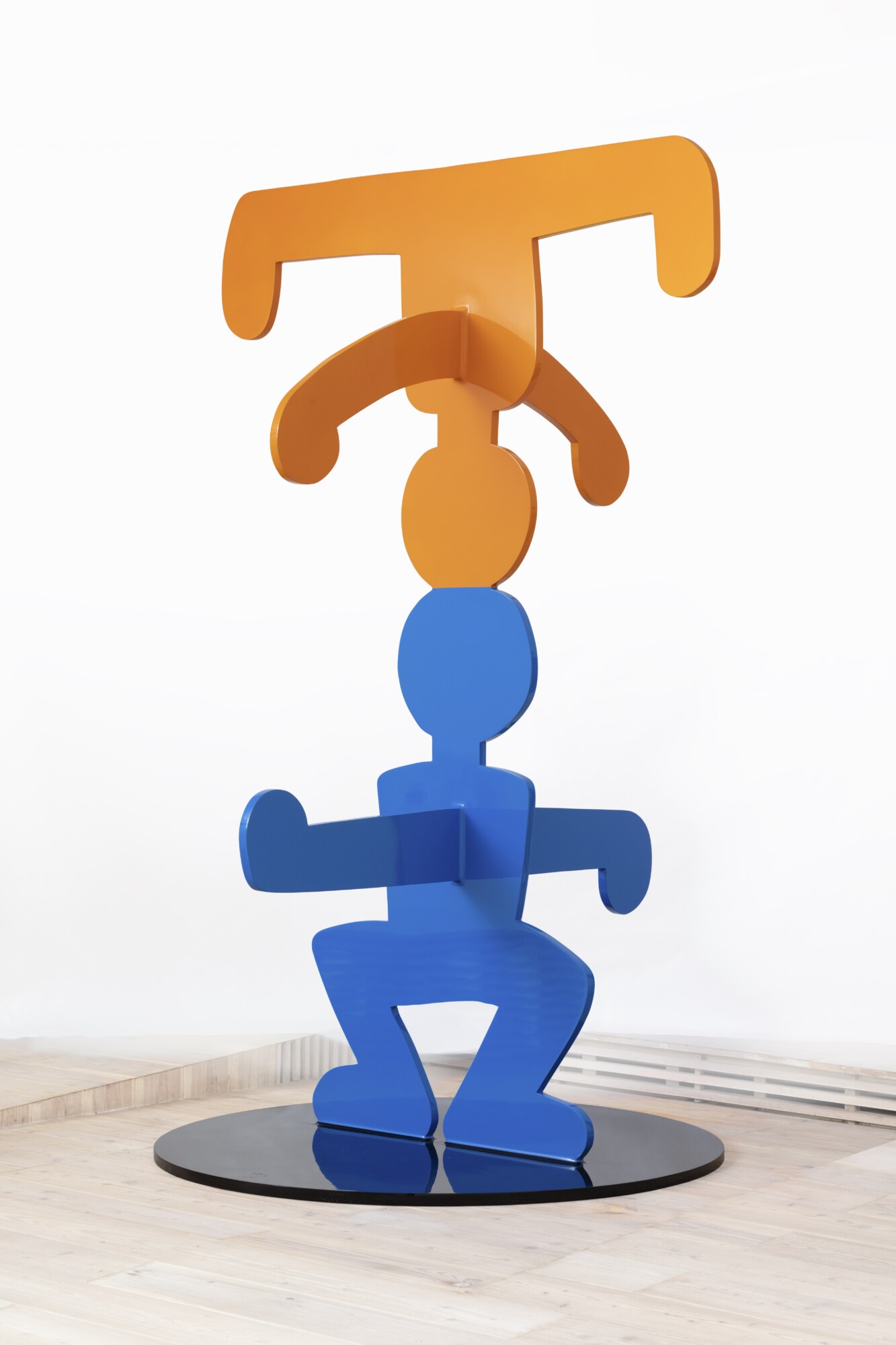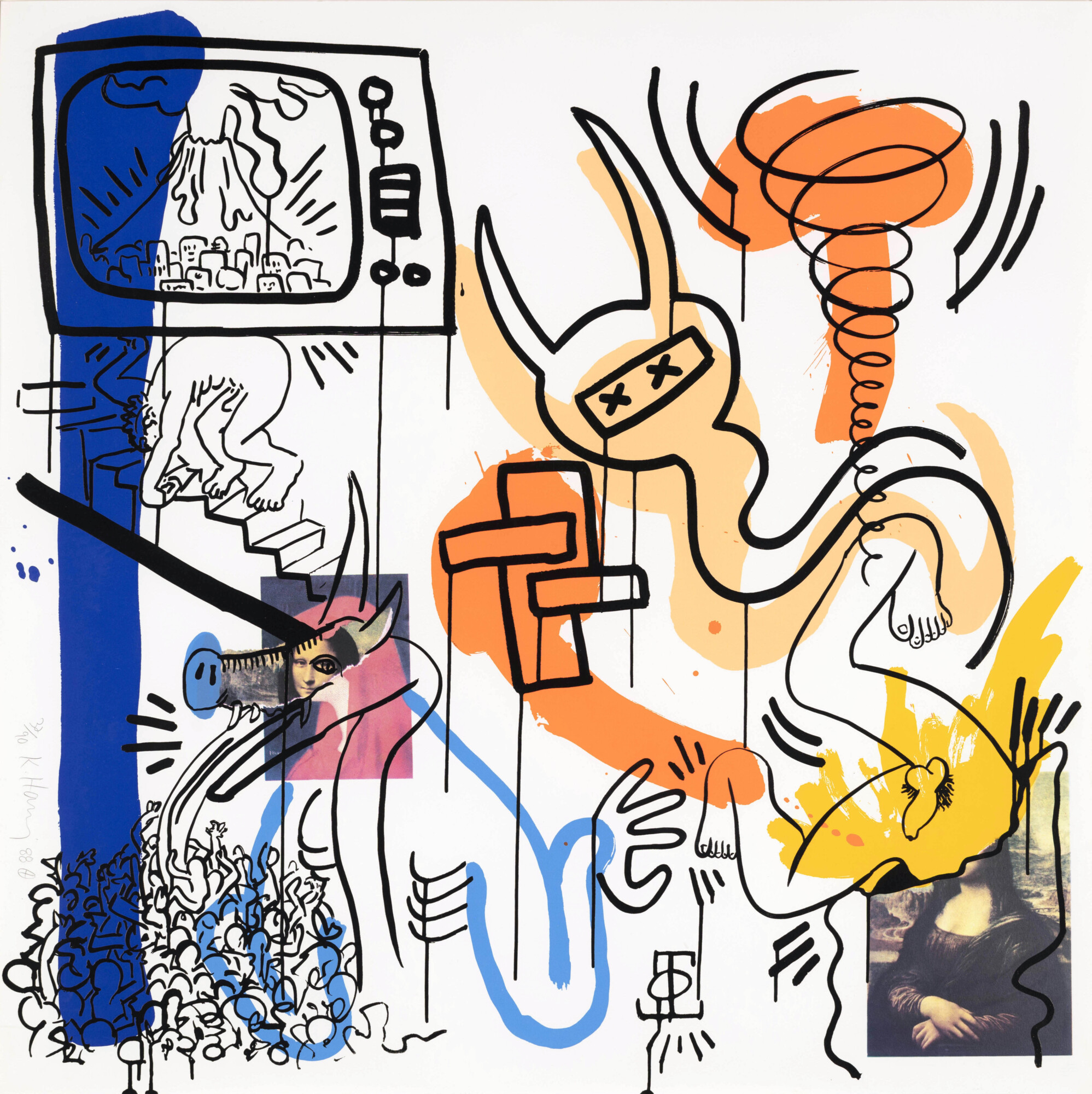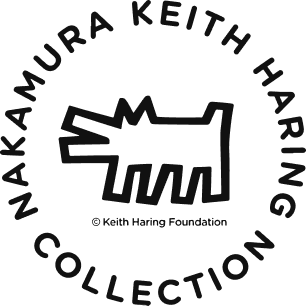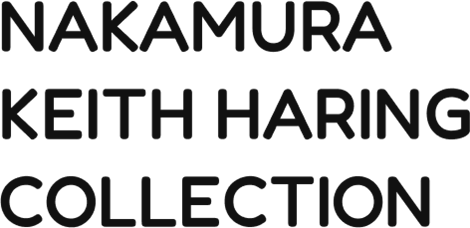
Designed by ©︎Kent Iitaka
Keith Haring: The Downtown Renaissance
Organized by Nakamura Keith Haring Collection
Supported by U.S. Embassy, Tokyo, Yamanashi Prefecture, Yamanashi Board of Education, Hokuto City, Hokuto City Board of Education
Special Thanks to The Keith Haring Foundation, CMIC HOLDINGS Co., Ltd.
In the 1970s and 1980s, New York City, where Keith Haring lived, was a city full of possibilities. New cultures, such as punk rock and hip-hop fashion, thrived, and individuals from all corners of the globe flocked to the city in pursuit of success. However, it was also a dangerous place, where drugs and crime were rampant, with the city existing in a precarious balance between these conflicting realities.
Haring’s works, created in this societal backdrop during the 1980s, still have a powerful impact on us today. They address issues such as coexistence with life-threatening infectious diseases, child welfare education, and human rights, which are essential for realizing a sustainable society. Through exhibitions that showcase a wealth of materials, including documentary photographs taken by photographers who lived during the same period, we aim to disseminate the messages that Haring left behind.
INSTALLATION VIEW
HIGHTIGHTS
1. Underground Culture
In this chapter, young Haring, who moved to New York, showcases his drawings from the early 1980s, along with photographic materials of nightclubs that were flourishing at the time and greatly influenced him. The exhibition reveals the clubs, which became hubs for Haring’s important art activities, such as painting murals inside and organizing his own events and exhibitions. It captures the atmosphere and energy of that era.
2. Homoeroticism and HIV/AIDS
In the 1980s, when the term “LGBTQ+” had not yet emerged and discrimination, prejudice, and oppression against sexual minorities were more prevalent than today, Haring openly pursued his artistic career as a gay man. This identity played a crucial role in his creative endeavors. The exhibition showcases Haring’s homoerotic art, including pieces featuring male genitalia, as well as works created to foster a proper understanding of HIV/AIDS, which profoundly affected the gay community at the time, and those made for activism and advocacy.
3. Art in Society
Haring, who used his art to address various social issues, put a special emphasis on education and welfare for children, creating numerous works for their benefit. The exhibition showcases the “Mural for Mount Sinai Hospital,” being displayed in Japan for the first time, illustrating Haring’s dedication and connection to children. Additionally, materials from the “Pop Shop,” which opened in New York City with the intention of making art accessible to everyone, are also featured. The exhibition highlights the continuing evolution of Haring’s art, which remains alive and influential in today’s society.
4. From New York to the World
Haring’s collaborations with top runners he met in New York, such as novelist William S. Burroughs and Andy Warhol, produced works that significantly elevated his recognition as an artist and led to his rapid rise to stardom. He signed a contract with a major downtown gallery and held numerous solo exhibitions abroad. This chapter showcases his collaborative works with Burroughs and Warhol, as well as materials from the contemporary art amusement park “Luna Luna,” where he was invited alongside renowned artists. It highlights how Haring’s activities, which began in New York City’s subway stations, spread across the globe.
FEATURED ARTWORKS
RELATED EVENTS
1. June Pride Month Program: Queer Film Screening
Dates: Saturday, June 24 – Sunday, June 25, 2023
Organized by: Nakamura Keith Haring Collection
Program Collaboration: Normal Screen
Subtitles Supported by: Embassy of Canada, New Chitose Airport International Animation Festival https://airport-anifes.jp/
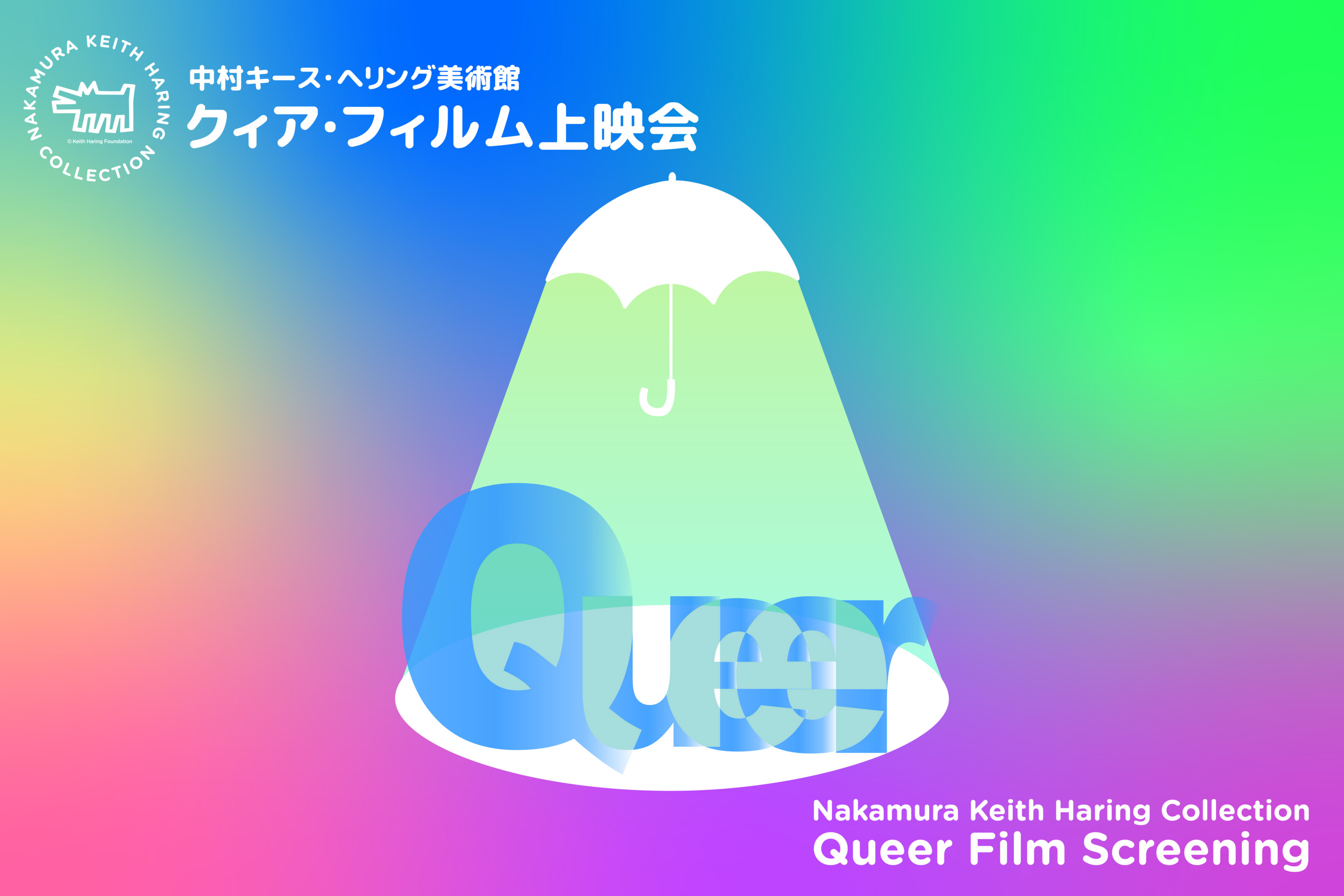
On Saturday, June 24, and Sunday, June 25, the Nakamura Keith Haring Collection hosted the Queer Film Screening as a related event to the exhibition Keith Haring: Downtown Renaissance, which began on Saturday, June 3. Held during Pride Month, the screening celebrated LGBTQ+ rights and awareness.
Pride Month is observed globally each June to commemorate the Stonewall Uprising that occurred on Saturday, June 28, 1969, in New York. This month promotes LGBTQ+ rights and raises awareness through various events worldwide. Approximately a decade after Stonewall, during the 1980s—a time when the term “LGBTQ+” was not yet widely recognized, and discrimination, prejudice, and oppression against sexual minorities were much more severe—Keith Haring lived openly as a gay man. He actively worked to raise visibility for the LGBTQ+ community and promote accurate understanding of HIV/AIDS through awareness campaigns.
Continuing Haring’s legacy, the museum organizes various Pride Month activities each June. This year, in collaboration with the Normal Screen film series, the museum held its first two-day consecutive film screening event, offering an opportunity to reflect on “queerness” through queer film expression.
On Saturday, June 24, the museum welcomed Akita Sho from Normal Screen for a special guest talk.
2. Food Trucks Come to the Forest of the Nakamura Keith Haring Collection!
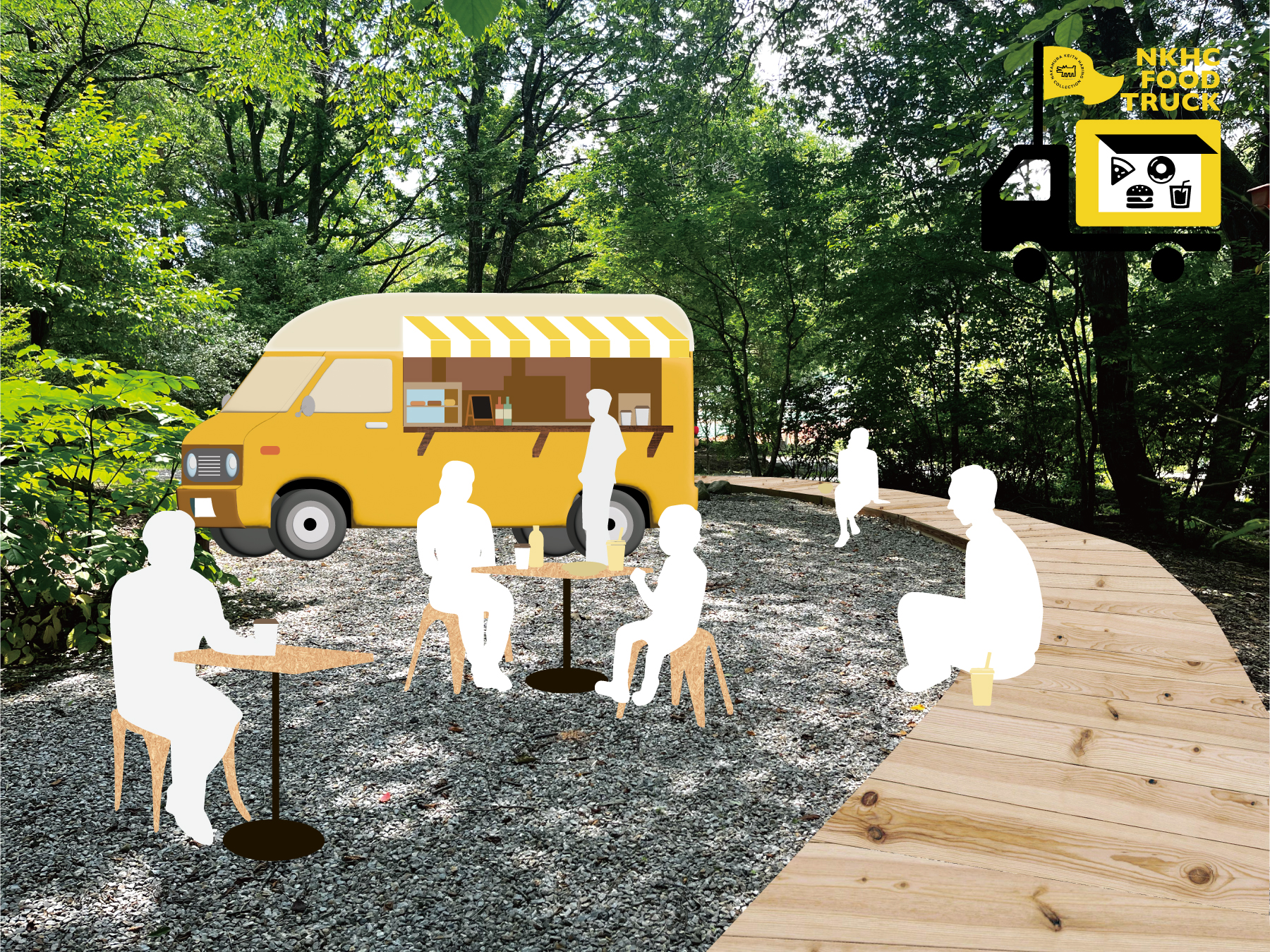
As part of the ongoing exhibition Keith Haring: Downtown Renaissance, a special food truck event was held over 13 days, primarily on Fridays, Saturdays, Sundays, and Mondays throughout August. Visitors enjoyed a rotating lineup of food trucks offering a diverse array of cuisine—from multicultural dishes reminiscent of New York and freshly baked pizza to unique desserts that could only be found in Yamanashi.
Guests were invited to pair their art appreciation with delicious meals while surrounded by the lush greenery and dappled sunlight of the museum’s forest.
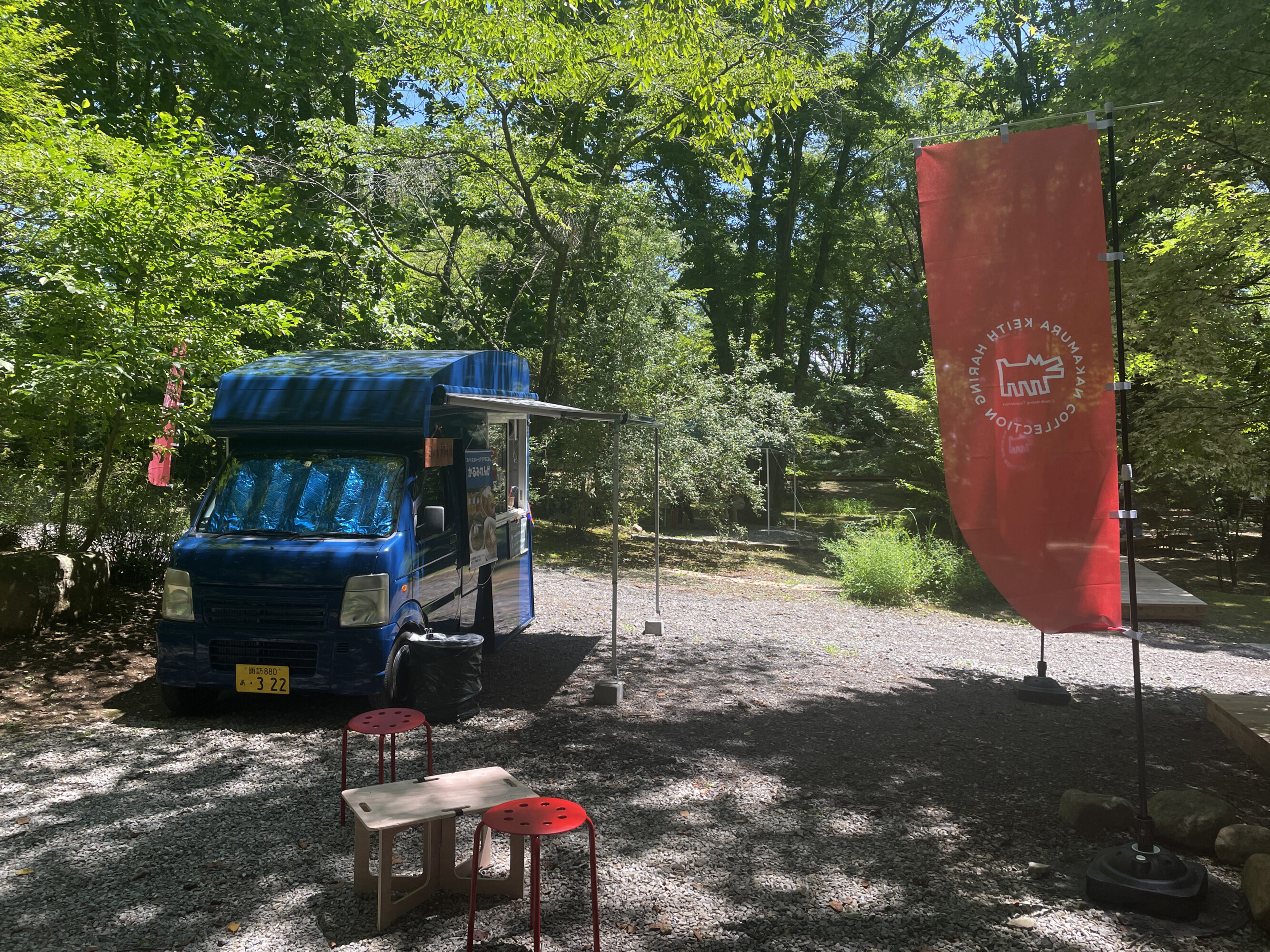
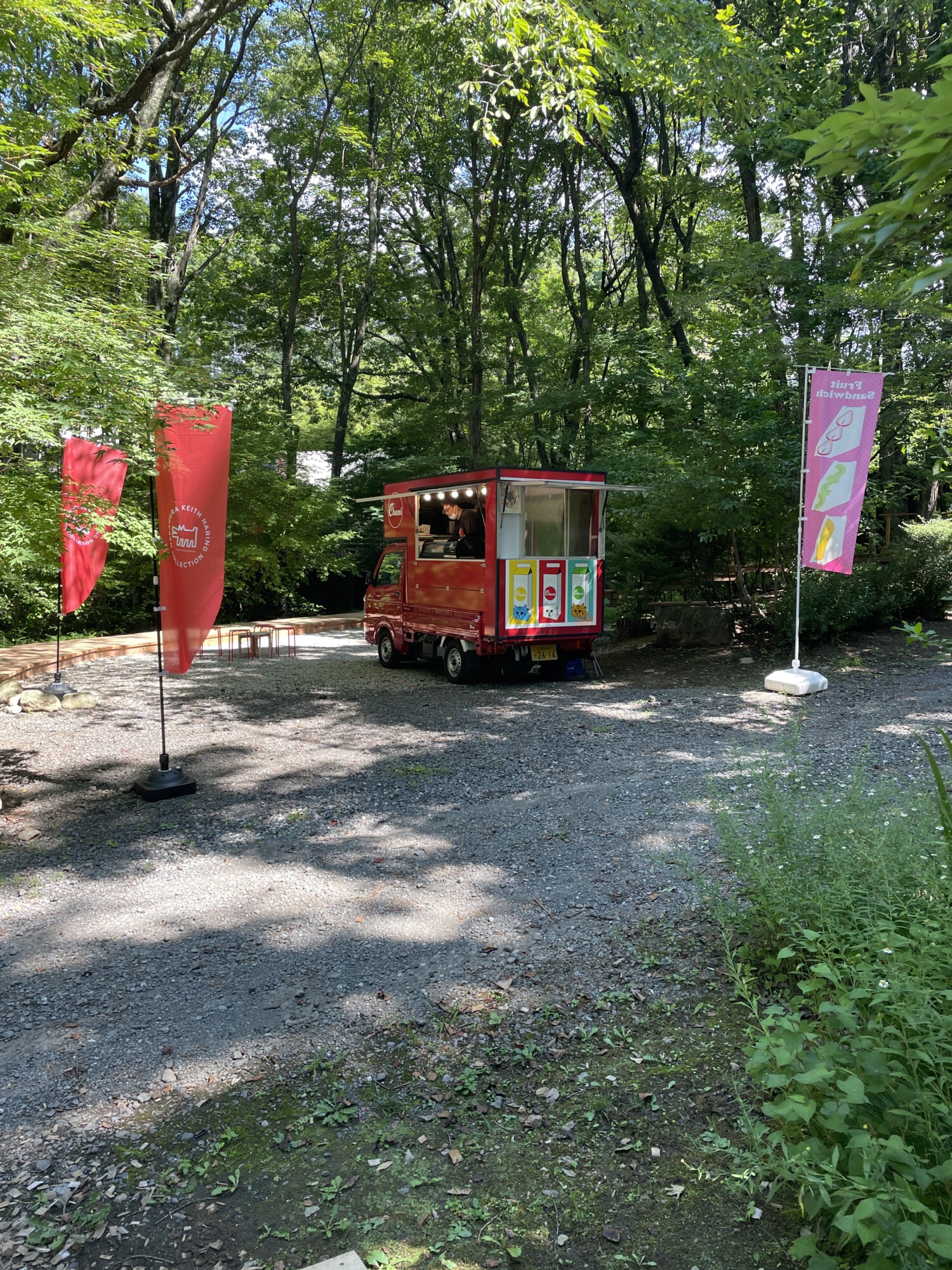
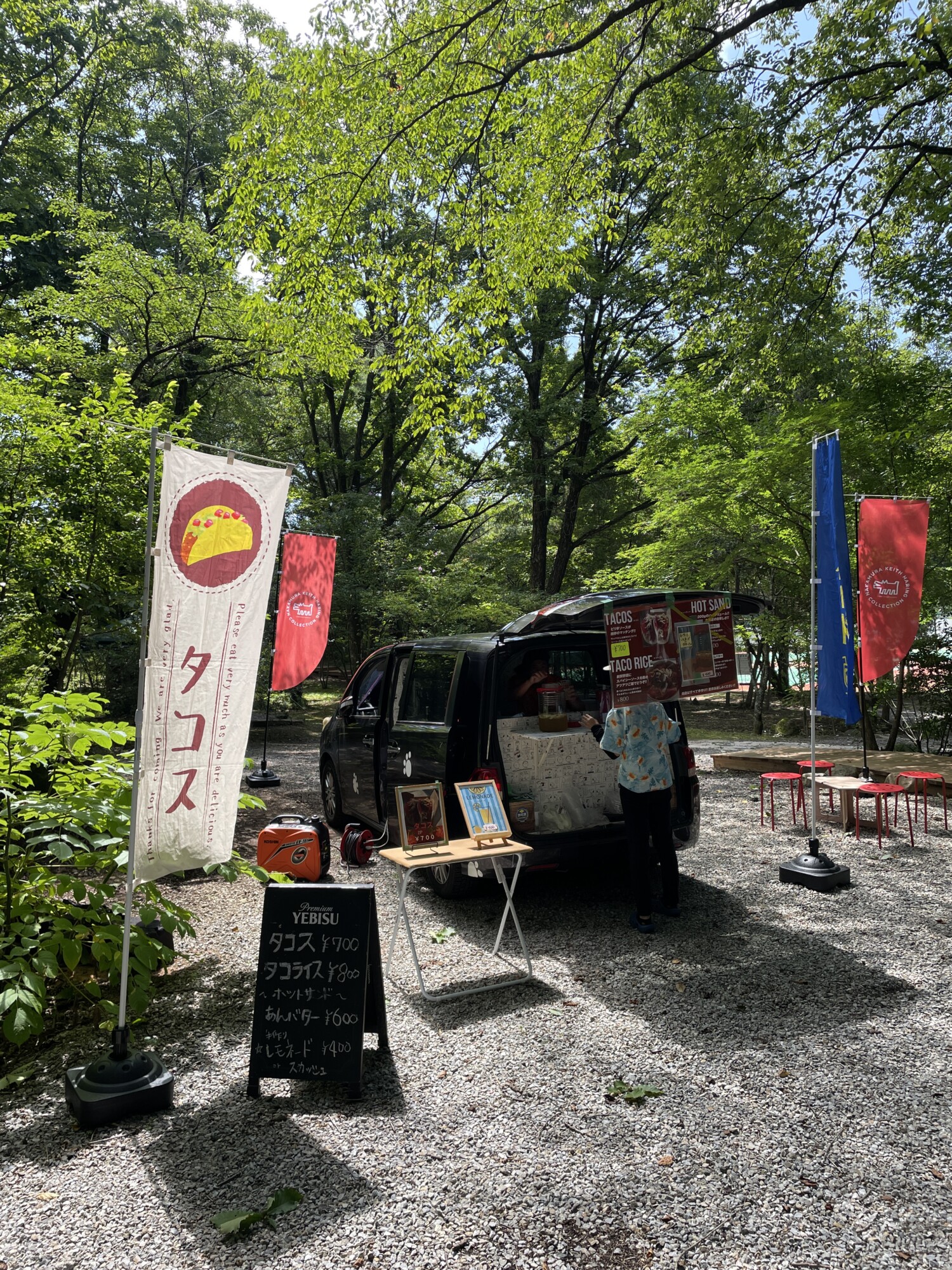
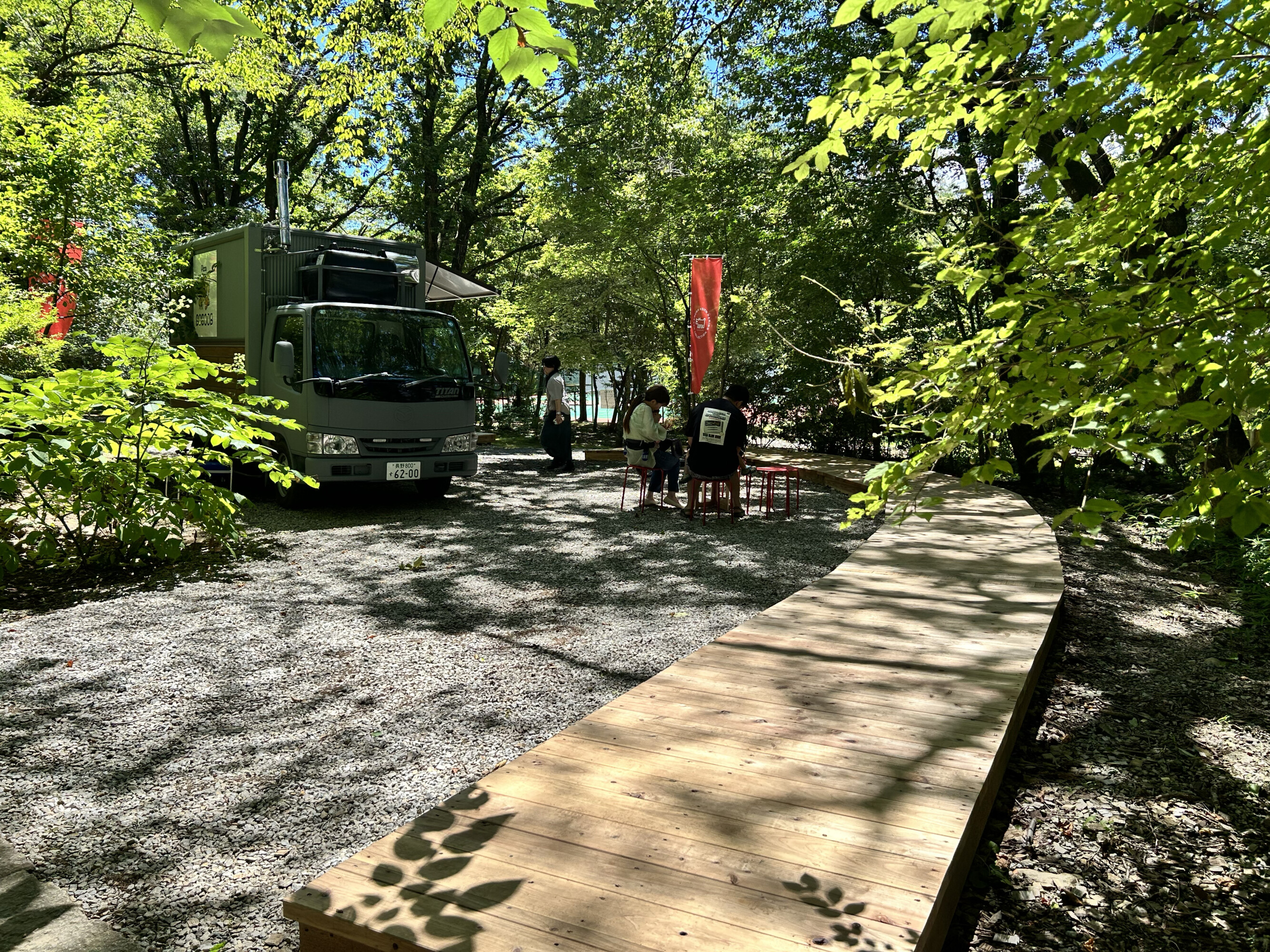
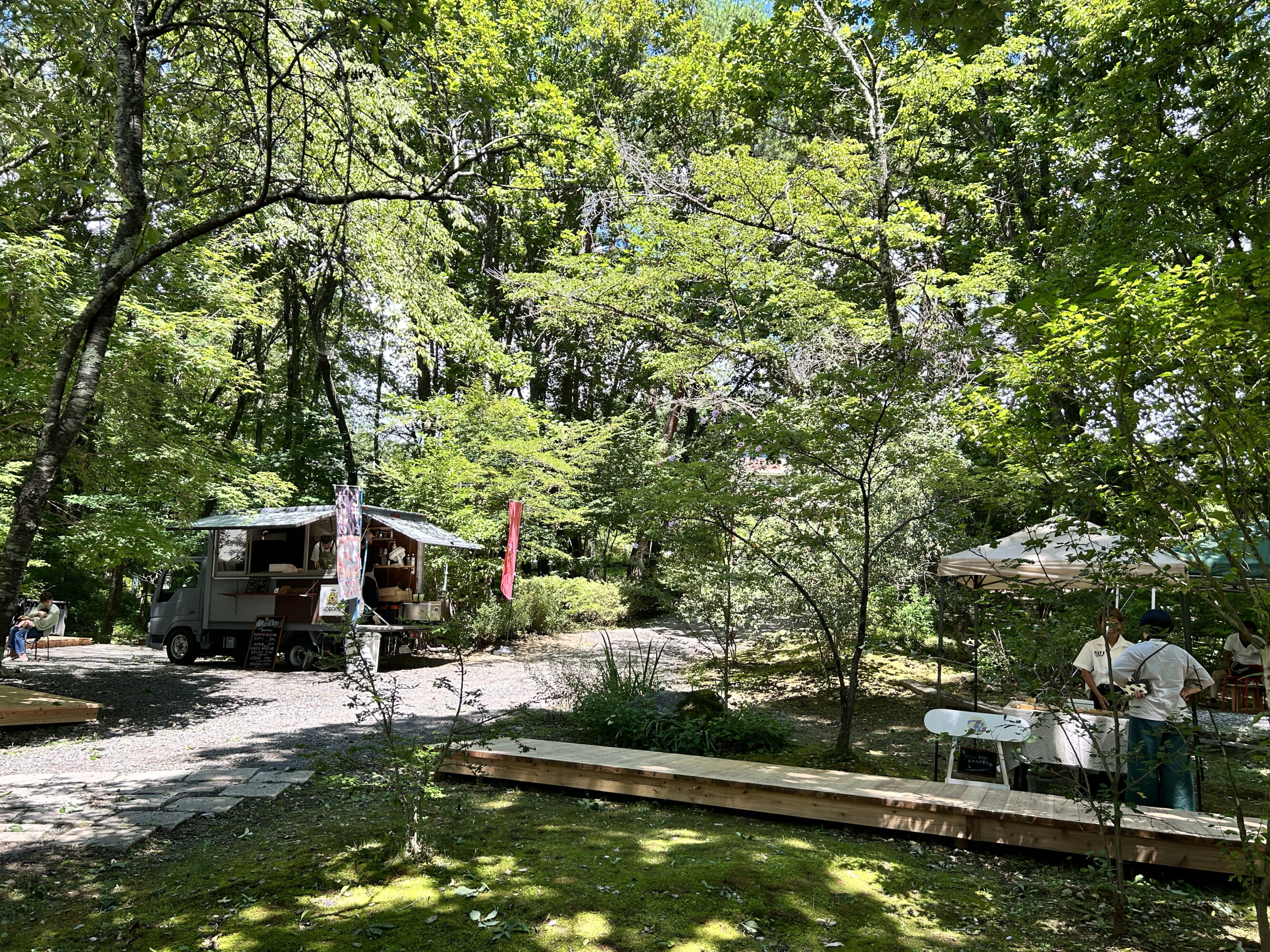
3. Online Roundtable: “Do You Wonder about the Bathroom Signs?”
Date and Time: Saturday, February 24, 2024, 5:00 PM – 6:30 PM
Guests: Andromeda, Jérémy Benkemoun, Yuri Abo
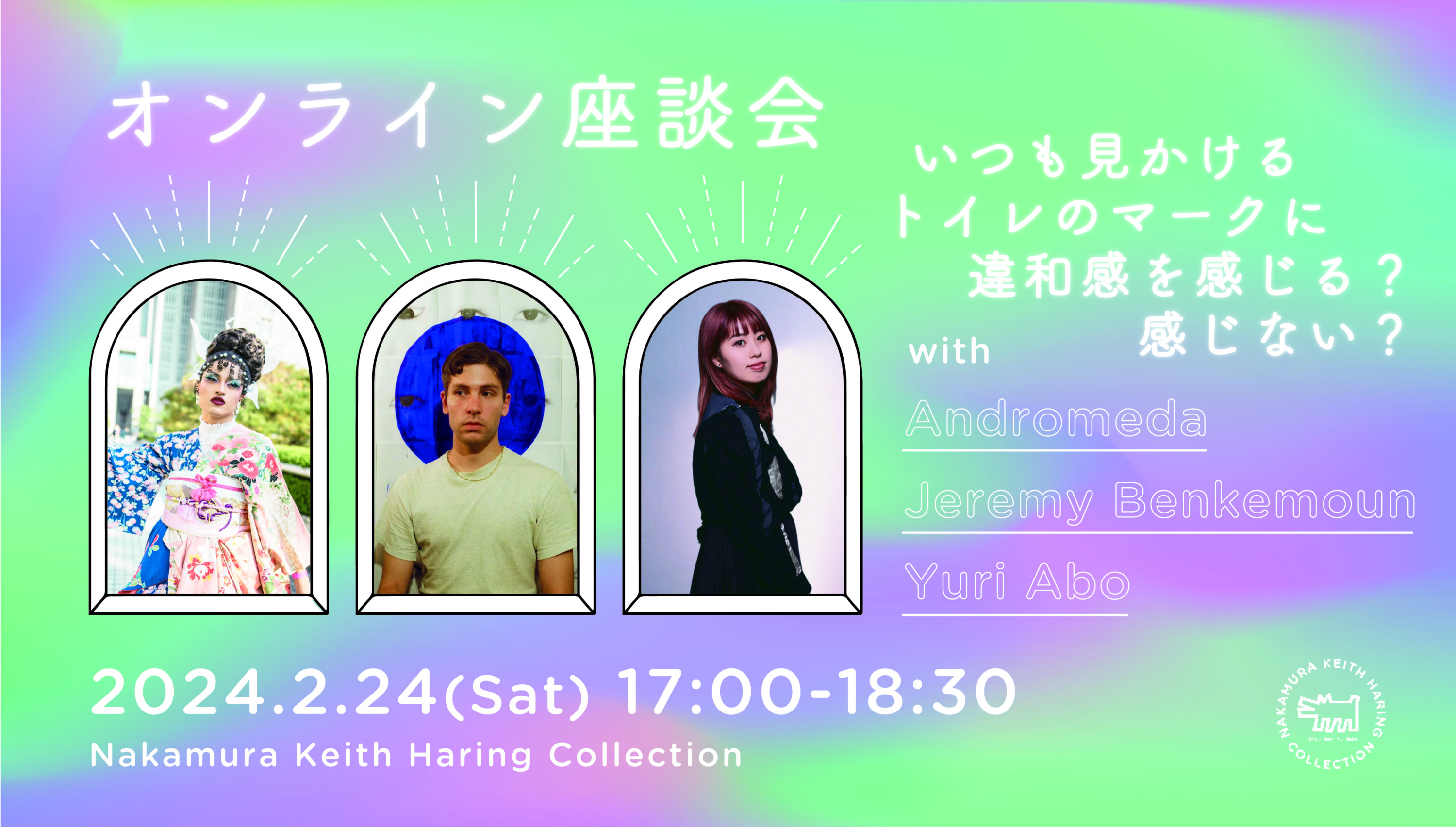
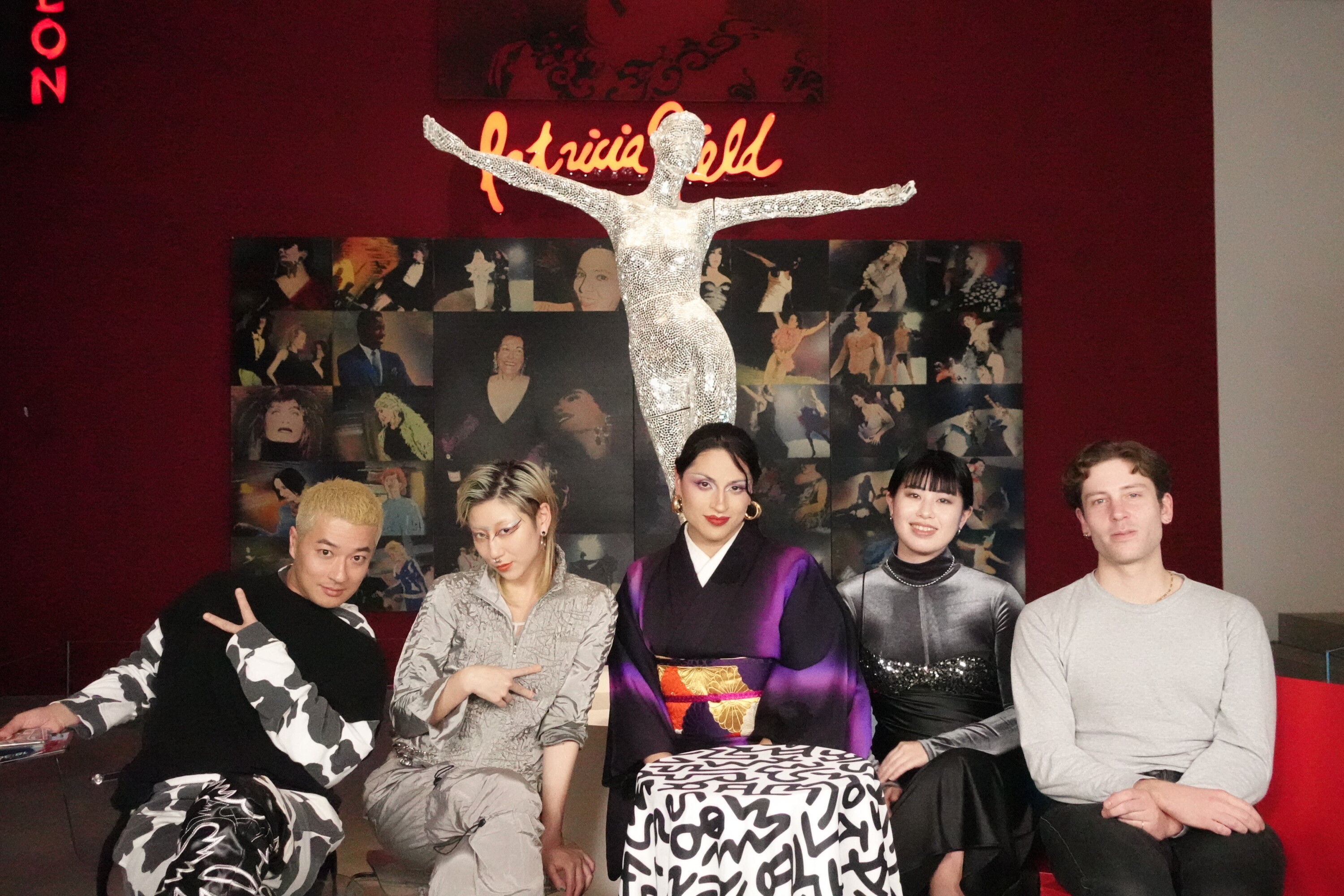
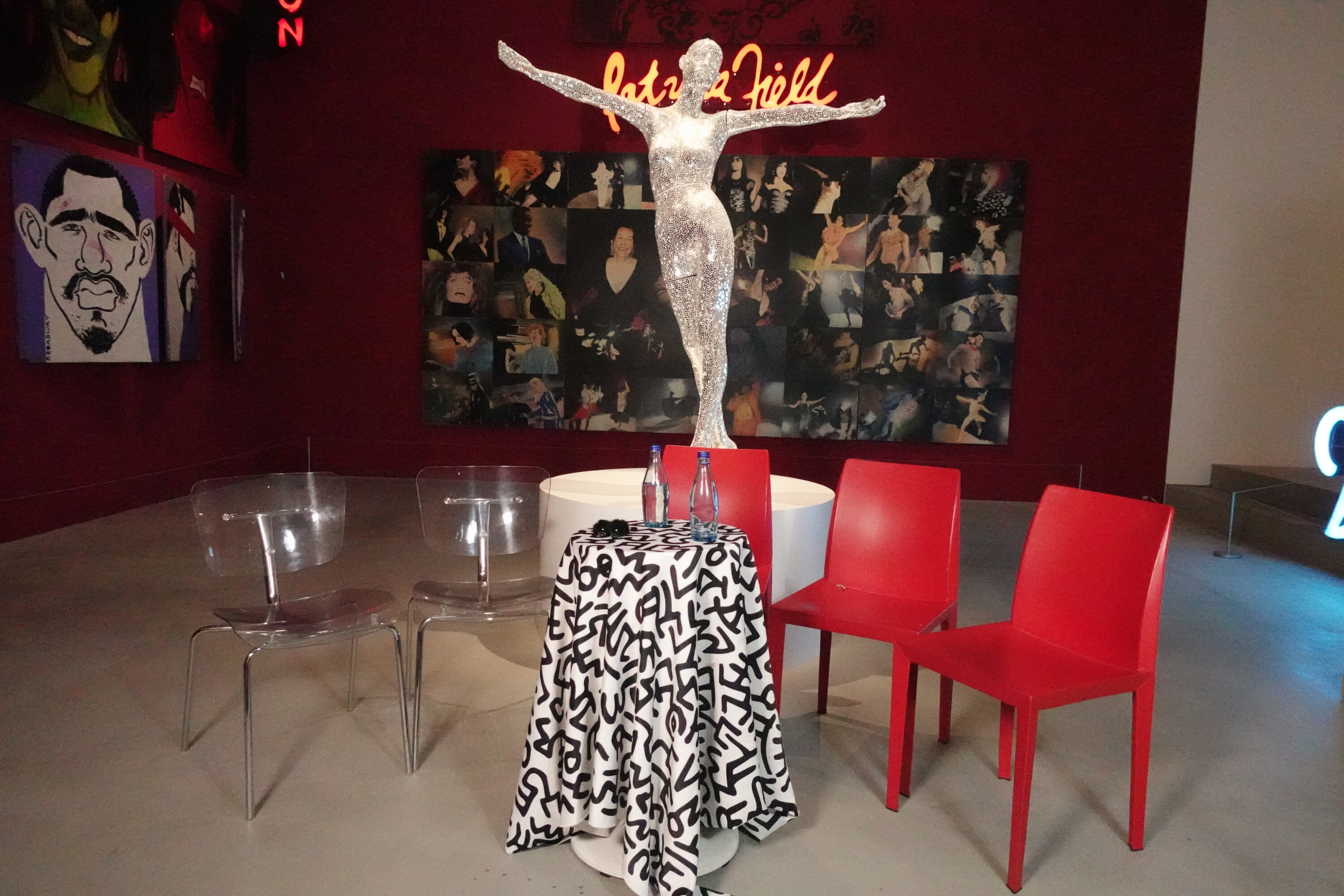
To commemorate the renovation of the restrooms at the Nakamura Keith Haring Collection into fully private, all-gender facilities, the museum hosted an online roundtable discussion. The event welcomed three diverse creatives with different cultural and gender backgrounds—Andromeda, Jérémy Benkemoun, and Yuri Abo—to explore themes of gender and societal stereotypes.
This discussion was streamed live from the House of Field exhibition space, offering a platform for conversations about inclusivity and challenging fixed notions through the lens of creativity.
